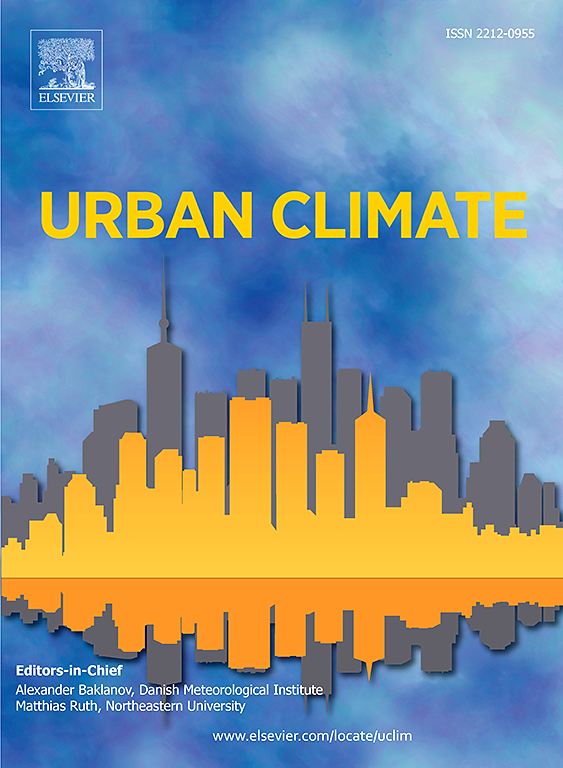Providing support for urban planning through investigating the cooling influence of park in Northern China: A case study of Xi'an
IF 6
2区 工程技术
Q1 ENVIRONMENTAL SCIENCES
引用次数: 0
Abstract
Urban parks are widely acknowledged for their role in mitigating the urban heat island effect and primarily function as spaces for relaxation and recreation for nearby residents. This study aims to guide land use planning around parks by evaluating the coupling mechanism between spatial morphology, wind patterns, distance to the park boundary (DTPB) and Park cooling island (PCI) intensity. PCI intensity was investigated through field measurements and numerical simulations in Xi'an. Multiple regression and sensitivity analyses were conducted to identify factors influencing the park's cooling effect, with human thermal comfort assessed using Physiological Equivalent Temperature (PET). The main results indicate that the most pronounced PCI intensity occurs at night, reaching 0.83 °C. Additionally, the average degree of linear correlation between temperature and DTPB in the downwind area (R2 = 0.82) is higher than that in the upwind area (R2 = 0.33). In the downwind area, DTPB is the primary factor affecting PCI, surpassing wind speed and sky view factor (SVF), whereas SVF is the crucial element in reducing PCI intensity in the upwind area. This paper supplements the fundamental theoretical understanding of how factors influence the PCI effect in Northwest China, thereby supporting urban land use planning around urban parks.
以西安市为例研究公园对城市降温的影响,为城市规划提供支持
城市公园因其缓解城市热岛效应的作用而得到广泛认可,其主要功能是为附近居民提供放松和娱乐的空间。本研究旨在通过评价空间形态、风型、公园边界距离(DTPB)和公园冷却岛强度(PCI)之间的耦合机制,指导公园周边土地利用规划。通过现场测量和数值模拟研究了西安地区的PCI强度。通过多元回归和敏感性分析,确定影响公园降温效果的因素,并采用生理等效温度(PET)评价人体热舒适性。主要结果表明,PCI强度在夜间最明显,达到0.83°C。下风区温度与DTPB的平均线性相关程度(R2 = 0.82)高于逆风区(R2 = 0.33)。在顺风区,DTPB是影响PCI的主要因素,超过了风速和天景因子(SVF),而SVF是降低逆风区PCI强度的关键因素。本文补充了西北地区PCI效应影响因素的基本理论认识,为城市公园周边土地利用规划提供理论支持。
本文章由计算机程序翻译,如有差异,请以英文原文为准。
求助全文
约1分钟内获得全文
求助全文
来源期刊

Urban Climate
Social Sciences-Urban Studies
CiteScore
9.70
自引率
9.40%
发文量
286
期刊介绍:
Urban Climate serves the scientific and decision making communities with the publication of research on theory, science and applications relevant to understanding urban climatic conditions and change in relation to their geography and to demographic, socioeconomic, institutional, technological and environmental dynamics and global change. Targeted towards both disciplinary and interdisciplinary audiences, this journal publishes original research papers, comprehensive review articles, book reviews, and short communications on topics including, but not limited to, the following:
Urban meteorology and climate[...]
Urban environmental pollution[...]
Adaptation to global change[...]
Urban economic and social issues[...]
Research Approaches[...]
 求助内容:
求助内容: 应助结果提醒方式:
应助结果提醒方式:


